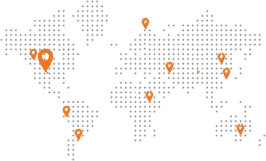Nineteenth International Congress on Rock Mechanics, Paris, France, 25–28 August 2000
Authors: J. F. T. Agapito and R. R. Goodrich (AAI)
High stresses and adverse geology in deep coal mines in the state of Utah, USA, have caused numerous bursts. The larger bursts have been associated with seismic events with Richter magnitudes of 3.6, and in some cases have filled openings for lengths of 150 m. A better understanding of the mechanisms and stress levels involved in bursting is needed to help develop improved stress control design and burst mitigation methods. The geology of the area is notoriously burst-prone. The coal has poorly developed cleating and occurs in multiple seams that are often bounded by very strong roof and floor sandstone/siltstone beds. The overburden is formed by thick, competent strata with numerous sandstone channels. This geology and deep cover are the major source of high stresses, causing bursts. This paper evaluates five common stress factors responsible for burst problems: depth, channels, arching, faults, and coal thickness. It uses case study data from longwall panels with two-entry/yield pillar systems typical of deeper Utah mines. Results illustrate the importance of analyzing stress factor experience to allow a better understanding of the problem.




